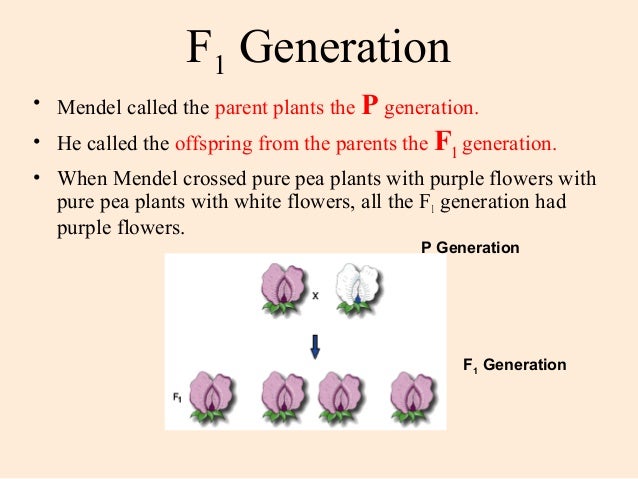F1 Generation: Definition And Genetics Explained

The concept of F1 generation is fundamental in genetics, particularly in the context of breeding and hybridization. It refers to the first filial generation, which results from crossing two parental lines. This generation is crucial for understanding the principles of heredity and the genetic diversity that can be achieved through controlled breeding programs. The F1 generation can exhibit unique characteristics due to the combination of genetic material from the two parent lines, often displaying hybrid vigor, which is an increase in growth rate, size, or yield compared to the parents.
To understand the F1 generation, it’s essential to delve into the basics of genetics, including the laws of Mendel. Gregor Mendel’s experiments with pea plants laid the foundation for modern genetics, introducing concepts such as the laws of segregation and independent assortment. According to Mendel’s law of segregation, each pair of alleles (different forms of a gene) separates from each other during gamete formation, resulting in each offspring inheriting one allele from each parent. This principle is key to predicting the genetic makeup of the F1 generation.
In the context of plant breeding, the creation of the F1 generation is a deliberate process aimed at achieving specific traits. Breeders select parent lines based on desirable characteristics, such as disease resistance, drought tolerance, or high yield. The goal is to combine these traits in the offspring to produce a generation with enhanced performance. For example, if one parent is resistant to a particular disease and the other has a higher yield, the F1 generation may exhibit both traits, making it more valuable for agricultural purposes.
The genetics behind the F1 generation involve the concept of heterozygosity. When two different parent lines are crossed, the resulting F1 offspring are typically heterozygous for many genes, meaning they have two different alleles for each gene. This heterozygosity can lead to increased fitness and better adaptation to various environments, a phenomenon known as heterosis or hybrid vigor. However, it also means that the F1 generation does not breed true; if F1 plants are self-pollinated or crossed with each other, the resulting F2 generation will exhibit amix of traits due to the segregation of alleles, leading to a decrease in hybrid vigor.
One of the most significant applications of the F1 generation is in agriculture, where it has been instrumental in developing high-yielding, disease-resistant crop varieties. For instance, the development of hybrid corn in the early 20th century marked a significant milestone in agricultural history. By crossing inbred lines of corn, breeders were able to produce hybrids that outyielded their parents by a considerable margin, leading to a substantial increase in corn production worldwide.
In addition to agriculture, the principles of F1 generation are also applied in animal breeding. For example, in poultry production, crossing different breeds can result in offspring with improved growth rates, egg production, or disease resistance. The goal in these programs is similar to that in plant breeding: to combine the best traits of the parent lines to produce offspring with superior performance.
The process of creating an F1 generation involves careful selection of the parent lines, followed by controlled pollination to ensure that the desired cross is made. In plants, this can be achieved through various techniques, including hand pollination or the use of pollination bags to prevent unwanted pollen from fertilizing the flowers. In animals, breeding programs often involve artificial insemination or controlled mating to achieve the desired genetic combinations.
Despite the advantages of F1 hybrids, there are challenges associated with their production and use. One of the main limitations is the cost and complexity of producing F1 seed. Because F1 hybrids do not breed true, farmers must purchase new seed every season, which can be expensive. Additionally, the development of F1 varieties requires significant investment in breeding programs, including the maintenance of inbred lines and the process of hybrid seed production.
In conclusion, the F1 generation represents a powerful tool in genetics and breeding, offering a means to combine desirable traits from different parent lines to produce offspring with enhanced characteristics. Through its application in agriculture and animal husbandry, the concept of F1 generation has contributed significantly to global food security and economic development. As research continues to unravel the complexities of genetics and as breeding technologies advance, the potential of the F1 generation to address future challenges in food production and sustainability will only continue to grow.
What is the primary advantage of F1 hybrids in agriculture?
+The primary advantage of F1 hybrids is the exhibition of hybrid vigor, which results in increased yield, better disease resistance, and improved adaptation to various environmental conditions compared to the parent lines.
How are F1 hybrids produced in plant breeding?
+F1 hybrids are produced through controlled pollination between two inbred parent lines. This can be achieved through techniques such as hand pollination or the use of pollination bags to ensure that only the desired pollen fertilizes the flowers.
What happens when F1 hybrids are self-pollinated or crossed with each other?
+When F1 hybrids are self-pollinated or crossed with each other, the resulting F2 generation exhibits segregation of alleles, leading to a mix of traits and a decrease in hybrid vigor. This is because the F1 hybrids are heterozygous for many genes, and the alleles segregate during gamete formation.


